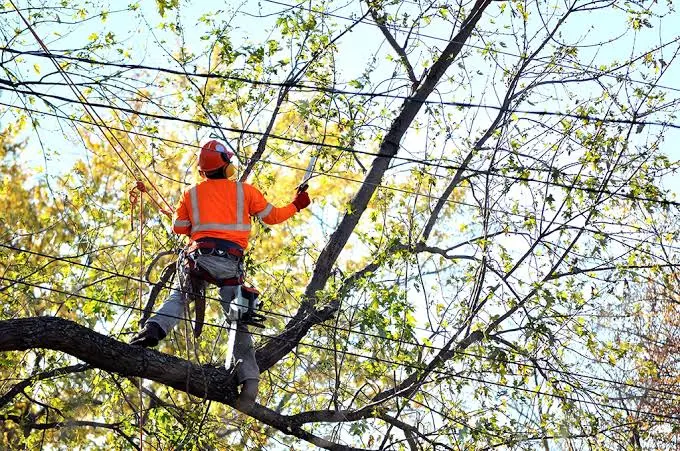Proper tree care is essential for maintaining the health, safety, and beauty of your landscape. Understanding the various types of professional tree services available can help you make informed decisions. Popular options include crown cleaning, pruning, and tree removal, each designed to address specific tree maintenance needs effectively.
Pruning
Pruning is one of the most essential and widely performed tree maintenance practices. It promotes healthy new growth, relieves stress on the tree, and improves air circulation within the canopy. Proper pruning helps ensure your tree remains vigorous, strong, and visually appealing for years. Utilizing the appropriate tools and employing the correct techniques are critical—this is why hiring a skilled professional like Treesafe is highly recommended.
Trees often sustain damage from storms and severe weather, resulting in broken or weakened branches that could pose safety hazards or block visibility. Immediate pruning and repair of damaged limbs are crucial to preserving tree health and protecting property. During winter, when trees are more vulnerable, removing dead or broken branches and trimming limbs encroaching on power lines reduces the risk of property damage and power outages.
Crown Thinning
Crown thinning is a targeted pruning technique designed to increase sunlight penetration and enhance airflow through the tree’s canopy. This process involves selectively removing branches that are overcrowded, damaged by pests or storms, or growing too low. Crown thinning improves the tree’s overall health by minimizing wind resistance, thereby reducing the likelihood of limb breakage during storms, and can also extend the tree’s lifespan. It enhances safety around residential and commercial properties and is best performed by trained arborists who can assess and execute the optimal thinning strategy safely and effectively.
Crown Cleaning
Crown cleaning focuses on removing dead, dying, or diseased branches to promote healthy limb growth and improve the tree’s appearance. This essential service can be performed throughout the year, especially on mature trees that are more prone to limb deterioration. Removing hazardous limbs not only enhances tree vitality but also safeguards people and property from potential injury or damage caused by falling branches. A well-maintained crown will preserve the tree’s natural shape without appearing overly dense or overgrown.
Tree Removal
When a tree becomes too large, diseased, or damaged beyond recovery, professional tree removal is the safest option. Hiring certified experts ensures that the removal process does not harm your home, surrounding structures, or the environment. Tree removal services often include stump grinding and site cleanup, offering a comprehensive solution tailored to your property’s needs.
Before hiring a tree removal company, verify their certificate of insurance and inquire about their professionalism and after-service support. Personal recommendations from friends and family can also help you find a reputable service provider who delivers quality results and prioritizes safety.
Insurance Coverage
For businesses in the tree care industry, having comprehensive insurance coverage is vital to protect against potential lawsuits and unforeseen expenses. Consulting with an experienced insurance agent can help identify the best policies to safeguard your operations.
Tree service insurance typically includes professional liability, general liability, and workers’ compensation coverage. Requirements vary by state, so it’s important to verify local regulations. General liability insurance covers damages and injuries that occur during your work, including third-party accidents. However, damage caused by falling trees may only be partially covered. Proper insurance not only mitigates risks but also ensures financial stability in the event of unexpected costs. Securing the right coverage helps keep your business secure and compliant.
In addition to pruning, crown care, and removal services, tree health can be significantly improved through regular inspections and preventive care. Seasonal assessments allow arborists to detect early signs of disease, pest infestations, or structural weaknesses. Integrating fertilization, soil management, and pest control into your tree care regimen enhances vitality and longevity. Moreover, investing in professional consultation can tailor maintenance plans to the specific species and conditions of your trees, optimizing their growth and resilience. Staying proactive with comprehensive tree care safeguards both your investment and the safety of your property over time.
Want to know about ‘Winter Tree Planting‘? Check out our ‘Gardening‘ category.



